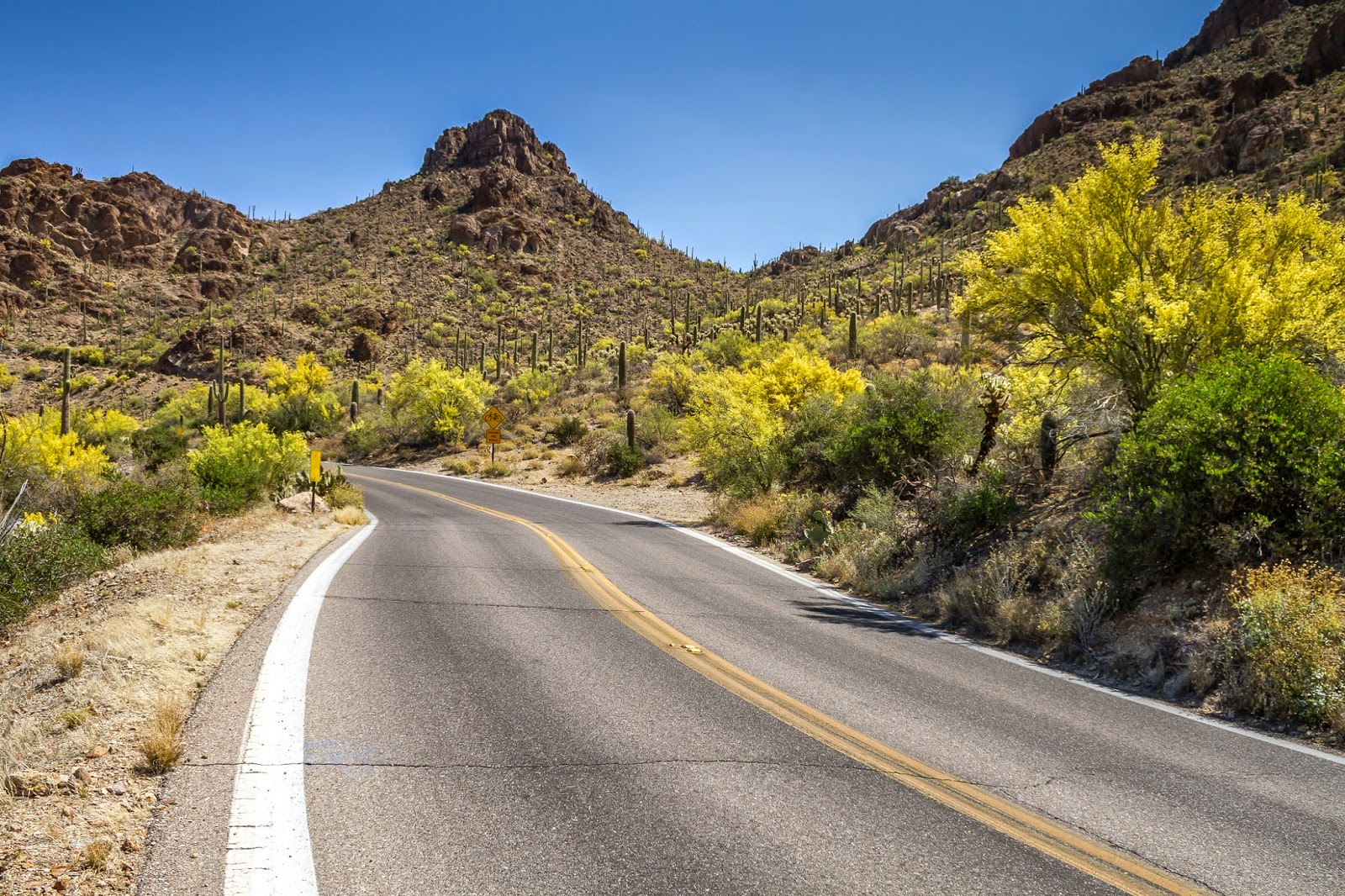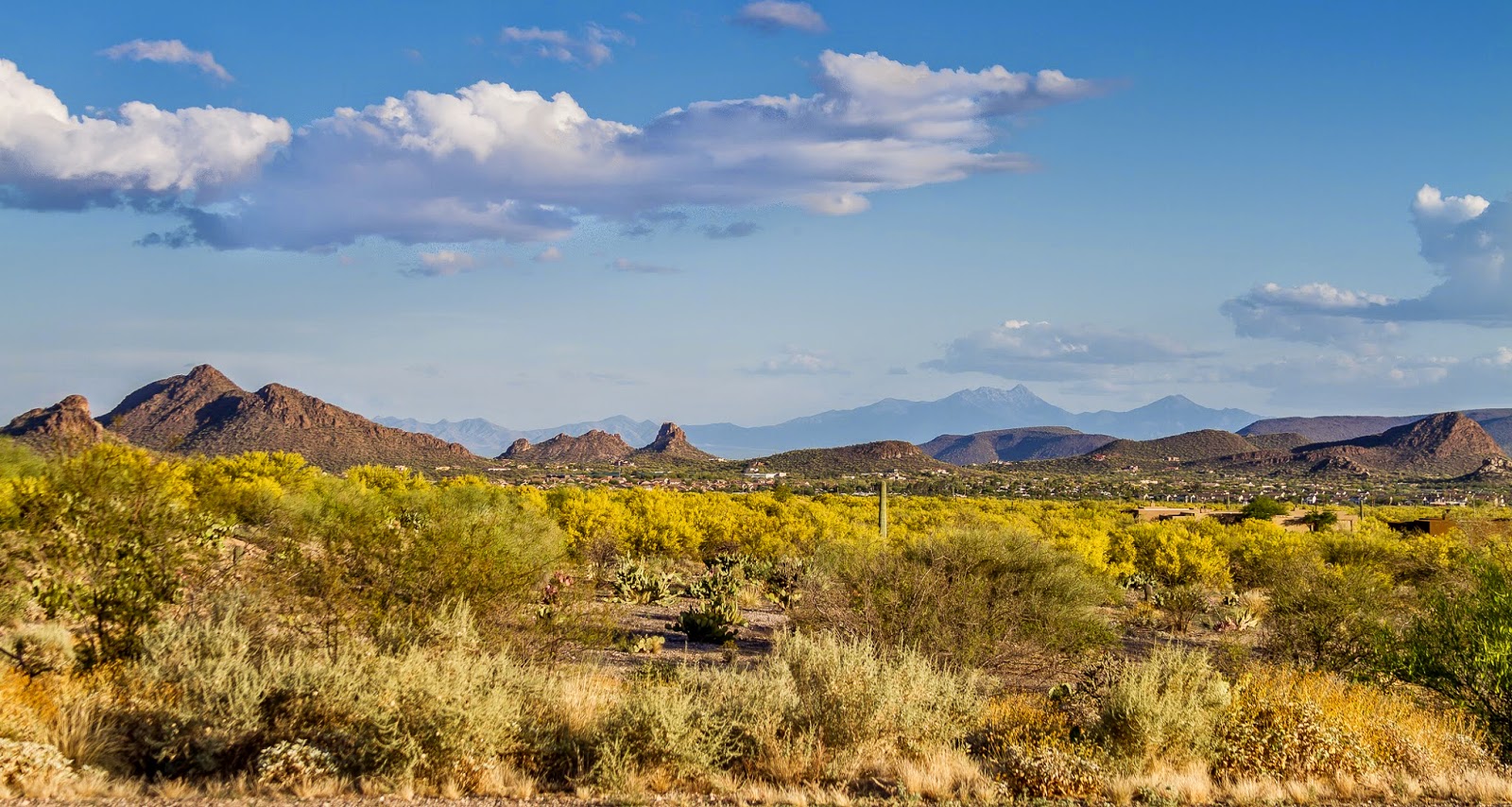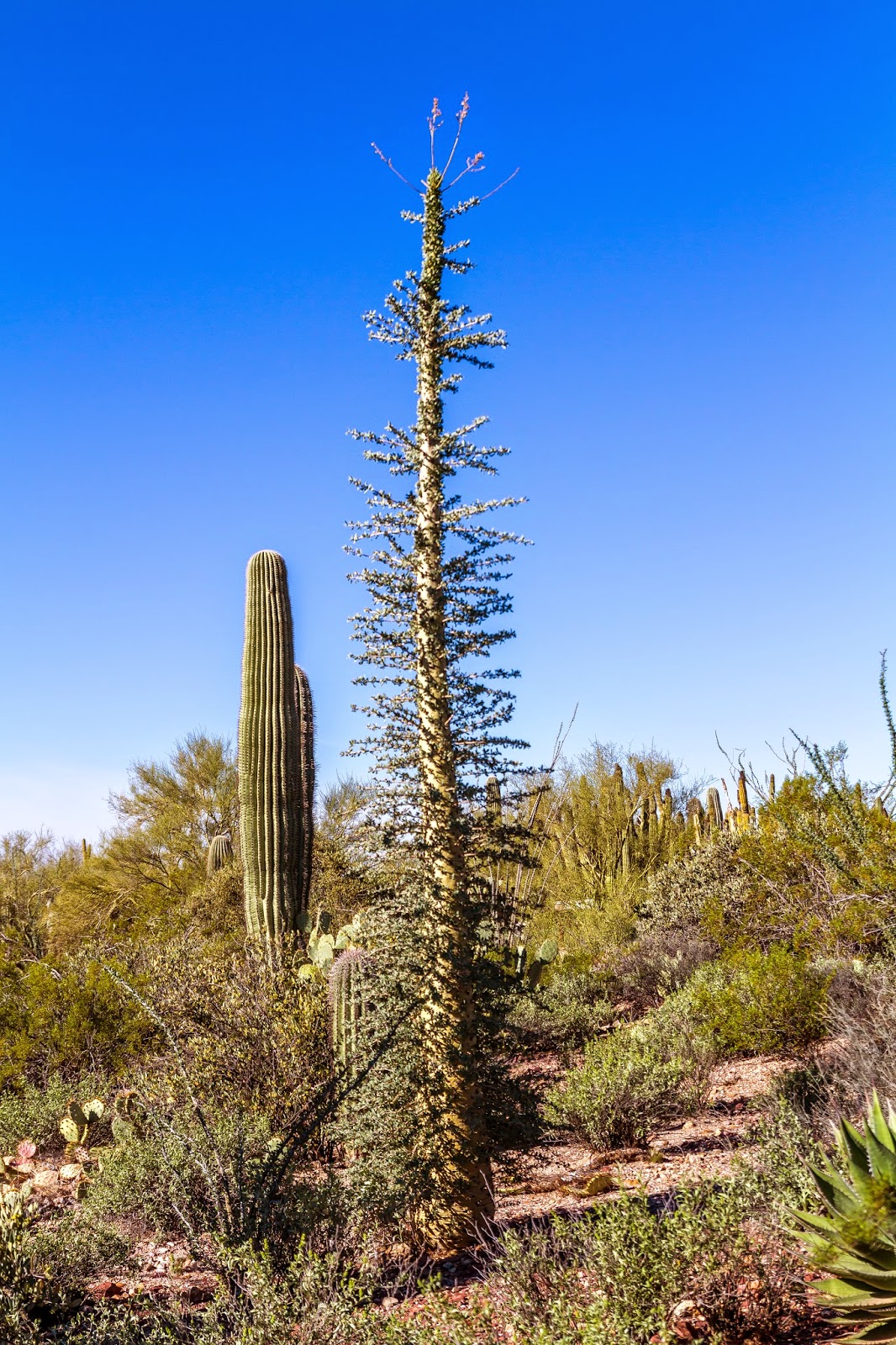As it would happen it rained throughout the first day and most of that night but we woke up to one of the nicest days that we have experienced in months. It started out almost cold with a mottled sky that promised much better weather for the day ahead. We were not disappointed as the day was sunny, on the cool side with a slight breeze.
Montezuma Castle National Monument
We decided to visit Montezuma Castle in the morning as it was near by and I was anxious to put my cameras to work. According to Wikipedia "The dwellings were built and used by the Sinagua people, a pre-Columbian culture closely related to the Hohokam and other indigenous peoples of the southwestern United States, between approximately 1100 and 1425 AD. The main structure comprises five stories and twenty rooms, and was built over the course of three centuries."
For the record Montezuma was born 40 years after the complex was abandoned and had nothing to do with it's construction.
There is evidence of an even larger structure nearby but all that remains is the foundation. There are also many caves at various heights nearby that were either used for living space or storage. A series of ladders that allowed public access to the site were removed in 1951 to prevent further looting of the national monument. Our visit was a short one due to our plans to ride the train into Verde Canyon which was slated to depart at one o'clock and we still wanted to stop off and see Tuzigoot National Monument which was on the way to the train station.
Tuzigoot National Monument
Tuzigoot National Monument was on our way to our destination and even though we had less than an hour to spare we wanted to at least see it and get a few pictures because we don't know when we might return to this area again.
Tuzigoot is 110 room pueblo built on an outcrop in the Verde Valley near Clarkdale Arizona. It is the largest of the pueblo ruins built by the Sinagua people in the Verde Valley.
Nestled on the mountainside is the town of Jerome which I would like to visit some day as the views from there must be spectacular.
While we were checking out the ruins we were entertained by a pair of Rock Wrens who seemed very used to having people in their space. This one came within a few feet of us searching for food hidden among the rocks.
Verde Canyon Railroad
Our main objective was to ride the Verde Canyon Railroad which is approximately a four hour trip in and back out of the Verde Canyon. Nan hasn't been on a train since she was a small child and I haven't ridden the rails since I snuck to NYC as a 15 year old with my brother Tom and a friend. All of the photos in this section were taken from our observation car moving at between 15 and 20 miles per hour including the one's that show the train itself. The first photo was taken just after we left the Clarkdale terminals we rounded a bend and crossed the RR trestle. The observation cars were attached to our passenger car that was stocked with food, drink and comfortable seating that we barely used.
Although we didn't see much wildlife on this trip we were treated to these wild donkeys not long after we left the station. We also saw them on the return trip but not nearly as close as this. Other than that we saw a couple of hawks and and a few small birds although we spent a good deal of time looking for eagles the live along the river to no avail.
The train is the only transportation in and out of the canyon and it follows the Verde River fairly closely throughout the trip. Fairly impressive Cottonwoods line the river obscuring much of the river from view and making for great cover for wildlife but even though at times you can't actually see the river you almost always can tell it's path due to the lush greenery.
"The Verde River is a major tributary of the Salt River in the U.S. state of Arizona. It is about 170 miles long and carries a mean flow of 602 cubic feet per second at its mouth. It is one of the largest perennial streams in Arizona." Wikipedia
You can learn more about the Verde River from the Nature Conservancy at: http://www.nature.org/ourinitiatives/regions/northamerica/unitedstates/arizona/placesweprotect/verde-river.xml
The landscape is stunning, the views spectacular and we could not be more pleased with this area in general. My affection for this place is certainly helped by the fact that the river actually has water in it and is not just a dry ditch like so many so called rivers here in Tucson where we live. Below is a photo of our train entering the only tunnel along the route which is barely big enough to fit a train.
There was quite a bit of evidence of Native American culture along the tracks like this early storage cave.
It's the kind of place that you could spend an entire lifetime exploring and not see all there is to see. The following are photos taken from the train on the trip back to the statin which was as entertaining as the trip out. This is something that if you are in the area you should definitely consider doing just for the views alone.




















































